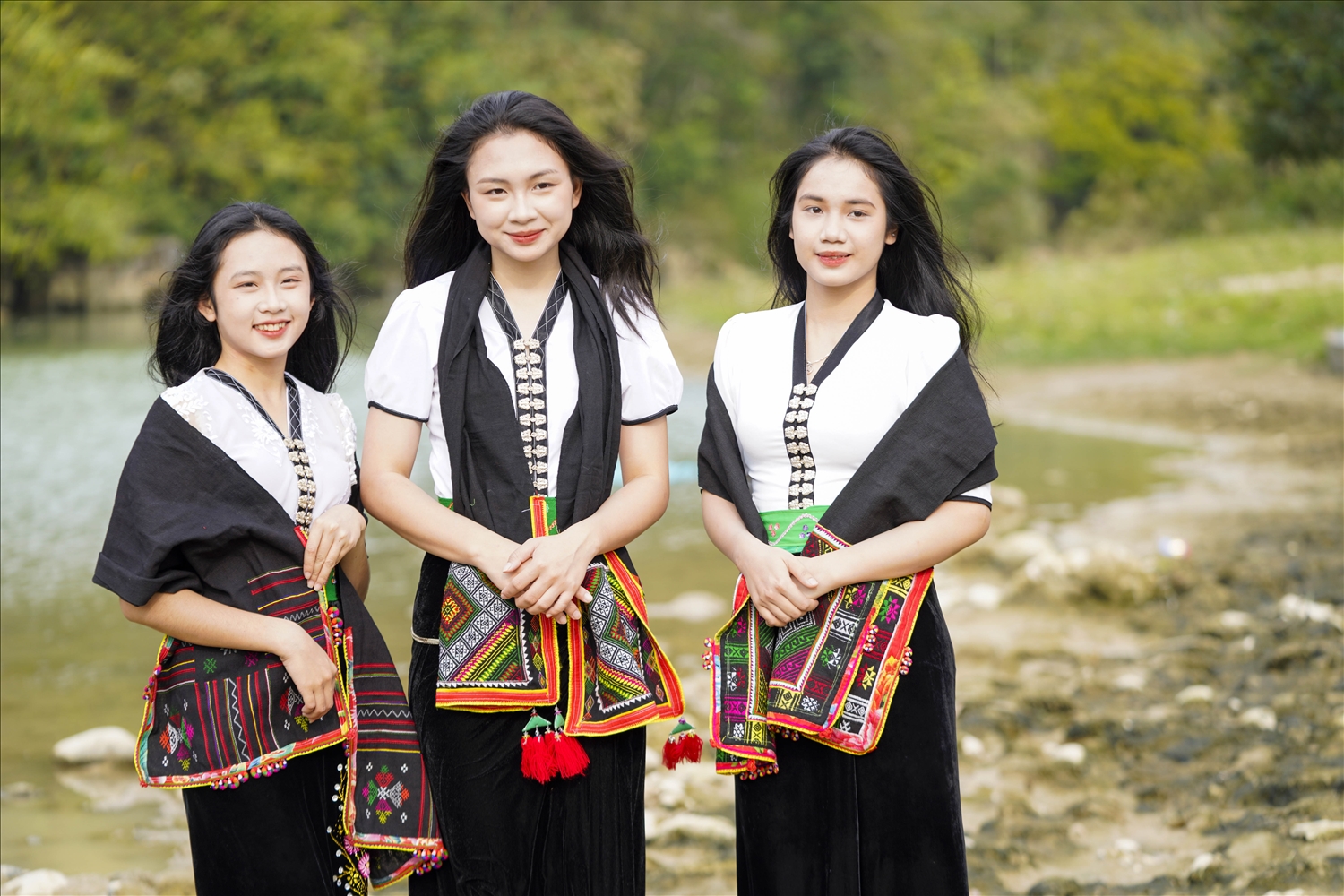
Photo: baodantoc.vn
Foreigners probably have heard about the Kinh people and learned Kinh Vietnamese through media or even first-hand in their trip to this Southeast Asian country. Is that all? In fact, Vietnam is home to 54 minority ethnic groups, and each group is proud to maintain its own distinct legacy, language, and way of living within one territory, which makes Vietnamese culture more diverse and welcoming to international visitors. Let’s find out more about some large ethnic groups in Vietnam in this article!
1. The Tay
Residing primarily in Northern Vietnam such as Lang Son, Cao Bang, Thai Nguyen, Quang Ninh, and Bac Kan, the Tay is the second largest minority group with more than 1,7 million of the total population. They are also known to be among the first people to set foot in ancient Vietnam from inland East Asia about 500 BC.
From decades ago until now, the Tay still inhabit far-flung areas of the North that get extremely cold during wintertime and full of wild animals danger, forcing them to build and stay in stilt houses - one of the symbols of minority ethnic groups in Vietnam.
In addition, due to some shared cultural elements and the proximity to the Kinh, Tay ethnic people were heavily influenced by the mass Vietnamese culture, from language (picking up words) to costumes (black trousers and a shirt, and the distinctive feature is that the shirt is buttoned under the right armpit, adorned with rings of unique blue material both there and at the lower sleeves). Therefore, travelers may find it hard to tell the difference between the Tay and modern Viet Kinh.
2. The Thai
Thai or Tai people are also one of the densest ethnic groups in Northern and North Central Vietnam, which accounts for 1,89% of Vietnamese. If you have a chance to travel to Son La or Lai Chau province, you can meet this beautiful Thai ethnicity from several popular Tai groups such as Black Thai and White Thai.
Tai-Kadai languages are the main language of Thai people, even though their ancestors originated from Yunnan (mainland China). The customary attire of the Thai people typically includes a colored button blouse (commonly of green, blue, pink, or purple) featuring a unique line in the middle and along the front. The bottom is a long skirt, accompanied by an intricately embroidered and notably distinctive stripe scarf.
To immerse in the authentic Thai minority culture, tourists can stay at their symbolic stilt houses and eat such specialties as sticky rice, bamboo-tube rice, rượu cần (stem liquor), and grilled meat with local herbs. During Tet Holidays, the Thai in each village also celebrate and organize festivals for visitors featuring unique Xoe dances, singing poems, and rich love exchanges.
3. The Muong
Muong people are the fourth largest minority in Vietnam, with about 1,45 million Muong population locate in the Northern provinces of Vietnam (Hoa Binh, Phu Tho, Son La), and North Central Region such as Thanh Hoa.
As for their origin, the oldest generation is said to share a connection with ancient Vietnamese people, so their subculture is quite similar to the Kinh. Muong people use the Viet-Muong language group (Southern Asian language family), and their staple has been replaced by rice, which used to be dominated by glutinous sticky rice in the past. However, the Muong still distinguish themselves from other ethnic groups by some main features. For example, the traditional costume of women consists of a headband (a rectangular piece of white fabric) a blouse (typically in white) featuring a short body with a V-shaped neck, and an ankle-length skirt comprising two main components: the skirt body and the intricately woven skirt waist - infused with the cultural elements of the Dong Son civilization.
4. The Khmer
The Khmer are found mainly in the Mekong Delta, formerly owned by the Khmer Empire, explaining why this is the largest concentration of Khmer people outside of Cambodia. Soc Trang and Tra Vinh are two provinces with the widely spread Khmer population (27.43% and 24.11% of all Khmer in Vietnam respectively). Remember to travel to these parts of Vietnam if you love to explore the Khmer Krom culture.
The Khmer culture expresses itself through numerous distinctive cultural legacies such as traditional ancient music and dance. The vibrant dances and songs of the Khmer community encapsulate unique cultural and spiritual values. Widely appreciated art performances like the Apsara dance and Robam Khotho dance showcase the Khmer people's artistic talent and finesse. Furthermore, traditional festivals like Chol Chnam Thmay and Dolta serve as occasions for the Khmer community to gather, offer prayers, and pay homage to their ancestors.